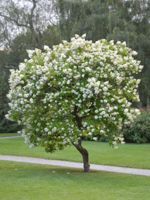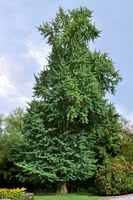Mon-Fri 9am - 5pm Mountain time
Japanese Tree Lilac vs Ginkgo Biloba
Syringa reticulata
Ginkgo biloba
NOT AVAILABLE THIS SEASON - MIGHT RETURN
NOT AVAILABLE THIS SEASON - MIGHT RETURN
Japanese Tree Lilac is an attractive, heavy-flowering lilac with fragrant white blossoms. It can be pruned to a single stem or grown as a multi-stemmed shrub.
Japanese Tree Lilac's dark reddish-brown bark peels as the tree ages, creating visual appeal for any yard, especially in the winter.
This tree is often planted along boulevards and its attractive white flowers signal spring to all who drive by.
The Ginkgo Biloba is regarded as one of the most distinctive and beautiful of all the deciduous trees, and has remained genetically unchanged for millions of years. Its beautifully fan-shaped leaves develop a clear yellow colour in fall. Graceful and attractive year-round, Ginkgo is the perfect conversation starter in your yard.
Japanese Tree Lilac Quick Facts
Ginkgo Biloba Quick Facts
Toxicity: Uncooked nuts in large quantities
In row spacing: 0.9 m (3 ft)

